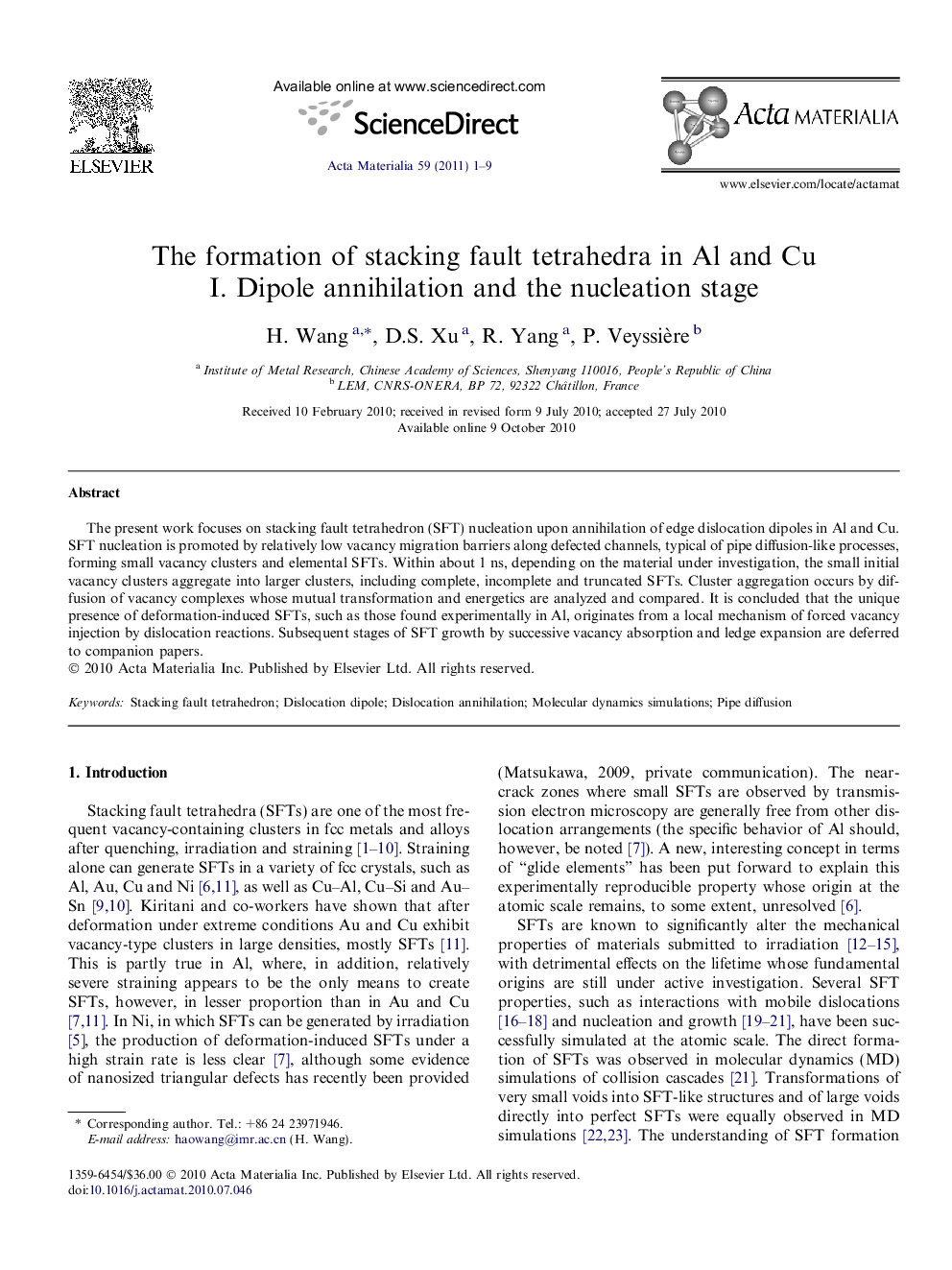| Article ID | Journal | Published Year | Pages | File Type |
|---|---|---|---|---|
| 1447815 | Acta Materialia | 2011 | 9 Pages |
The present work focuses on stacking fault tetrahedron (SFT) nucleation upon annihilation of edge dislocation dipoles in Al and Cu. SFT nucleation is promoted by relatively low vacancy migration barriers along defected channels, typical of pipe diffusion-like processes, forming small vacancy clusters and elemental SFTs. Within about 1 ns, depending on the material under investigation, the small initial vacancy clusters aggregate into larger clusters, including complete, incomplete and truncated SFTs. Cluster aggregation occurs by diffusion of vacancy complexes whose mutual transformation and energetics are analyzed and compared. It is concluded that the unique presence of deformation-induced SFTs, such as those found experimentally in Al, originates from a local mechanism of forced vacancy injection by dislocation reactions. Subsequent stages of SFT growth by successive vacancy absorption and ledge expansion are deferred to companion papers.
